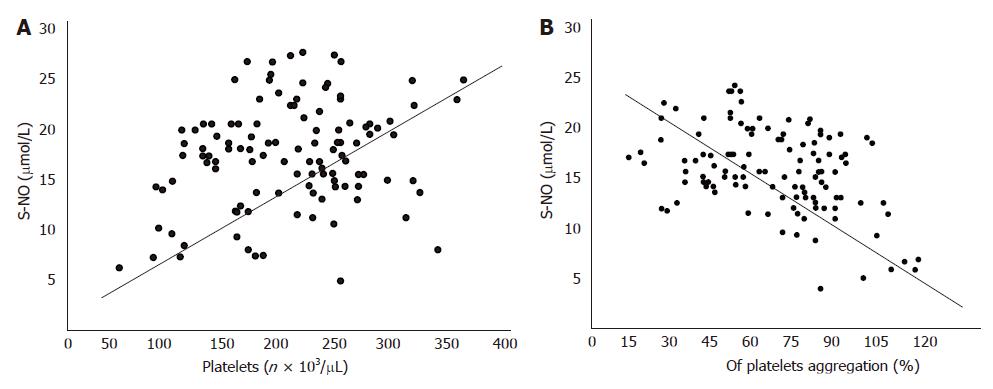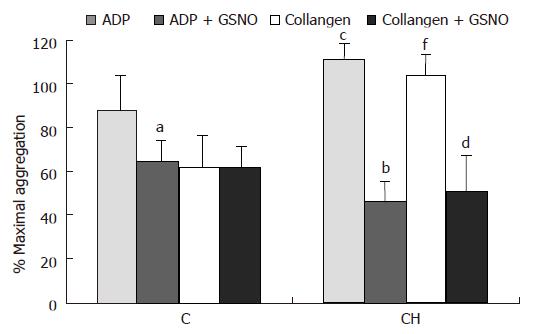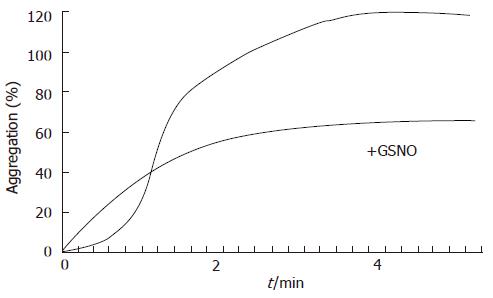Copyright
©2007 Baishideng Publishing Group Co.
World J Gastroenterol. Jul 21, 2007; 13(27): 3677-3683
Published online Jul 21, 2007. doi: 10.3748/wjg.v13.i27.3677
Published online Jul 21, 2007. doi: 10.3748/wjg.v13.i27.3677
Figure 1 The metabolism of NO in the circulation: the NO produced circulates both as nitrite/nitrate and in complexes as protein and nonprotein S-nitrosothiols.
The formation of S-NO adducts, as well as the release of NO from these compounds, is strongly influenced by the bioavailability of glutathione (GSH) and cysteine (CYS) and by the redox status of plasma.
Figure 2 A: Correlation between S-NO and platelet number in each patient.
As evident, S-NO levels were significantly directly correlated with platelet number (r = 0.58, P < 0.01). S-NO: S-nitrosothiol; B: Correlation between S-NO and % of platelet aggregation in each patient. As evident, S-NO levels were significantly inversely correlated with percent of platelet aggregation (r = -0.52, P < 0.05).
Figure 3 Percentage aggregation (mean ± SD) obtained in HCV-positive patients and controls, in basal conditions and after incubation with GSNO.
Compared with controls % maximal aggregation induced by ADP was significantly increased in CH patients. Moreover, the collagen addition induced a significant increase in % maximal aggregation in the platelets from CH patients. After incubation with GSNO, % maximal aggregation induced by ADP was significantly reduced in both groups, but the reduction was much more evident in the CH patients, while % maximal aggregation induced by ADP was not changed by the addition of GSNO in control group and was significant reduced in CH patients. C: controls; CH: chronic hepatitis; GSNO: nitrosoglutathione. aP < 0.05, bP < 0.01 vs ADP; dP < 0.01 vs collagen; cP < 0.05 vs ADP; fP < 0.01 vs collagen.
Figure 4 Aggregation curves of a single representative CH patient before and after GSNO.
GSNO was able to reduce platelet % maximal aggregation and modified the curve morphology by abolishing the delay in the beginning of the aggregation. GSNO: nitrosoglutathione.
-
Citation: Federico A, Filippelli A, Falciani M, Tuccillo C, Tiso A, Floreani A, Naccarato R, Rossi F, Del Vecchio Blanco C, Loguercio C. Platelet aggregation is affected by nitrosothiols in patients with chronic hepatitis:
In vivo andin vitro studies. World J Gastroenterol 2007; 13(27): 3677-3683 - URL: https://www.wjgnet.com/1007-9327/full/v13/i27/3677.htm
- DOI: https://dx.doi.org/10.3748/wjg.v13.i27.3677












